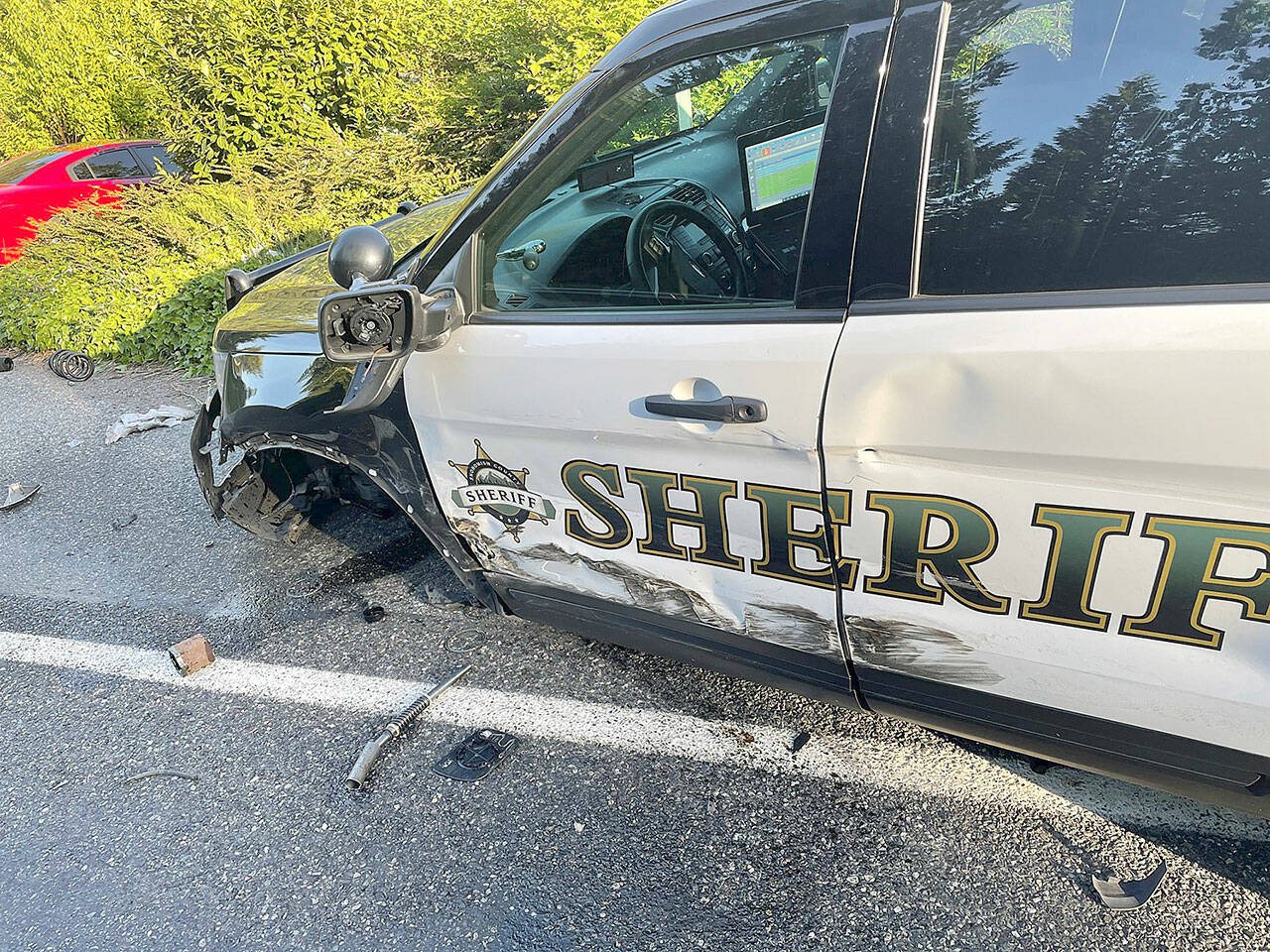By The Herald Editorial Board
Nearly 60 years ago, Ralph Nader, then a budding consumer advocate, wrote “Unsafe at Any Speed: The Designed-in Dangers of the American Automobile.”
While the book’s first chapter focused on the 1960-63 Chevrolet Covair, Nader addressed long-neglected and industry-wide safety problems involving a range of issues, including lax crash protection, susceptibility to rollover accidents, steering wheel columns that didn’t collapse in collisions and other design and material safety failures.
While most vehicles now are undeniably much safer than models of 60 years ago, Nader could write an update that included more than a few chapters on the designed-in dangers of Tesla vehicles and their AutoPilot and Full-Safe Driving options.
That issue has returned to national and local prominence in recent days.
Last Friday, a 28-year-old motorcyclist died after he was struck from behind by a Tesla on Fales Road in Maltby and thrown from his bike. A Washington State Patrol report alleges that the 56-year-old driver of the vehicle had activated the 2022 Model S’s autopilot feature, which, as explained on Tesla’s website, is intended to match the speed of surrounding traffic and assist steering within a clearly marked lane.
Tesla owners and drivers are told — with prompts reminding before driving — that Autopilot and the self-driving feature, which adds capabilities including auto-steering and turns on city streets and streetlight and stop sign control, that the vehicle is not autonomous and requires “active driver supervision,” including keeping hands on the steering wheel.
The Tesla driver in the fatal Maltby crash told a trooper he was distracted by his phone prior to the accident. After determining the driver was not impaired, he was arrested and booked for investigation of vehicular homicide while driving distracted. The man posted $100,000 bail Sunday and was released from jail.
But last weekend’s fatal accident wasn’t an outlier.
Last June, The Washington Post reported an analysis of data on crashes reported to the National Highway Traffic Safety Administration that found at least 736 crashes between 2019 and 2022 involving Teslas in Autopilot mode, 17 of which involved fatalities, reflecting a surge of wrecks over that four-year period. By December, the Post had added to those figures, finding nearly 1,000 crashes, about 40 of them involving fatalities since 2016.
Among the findings of the Post analysis, drivers had been able to activate the Autopilot technology on roads for which is was not designed. As well, the report detailed incidents where Autopilot failed to brake for a stopped school bus — stop sign out and lights flashing — in North Carolina, causing debilitating injuries to a 17-year-old student as he exited the bus; braked when it wasn’t supposed to, causing crashes, including a eight-vehicle pileup on the San Francisco Bay Bridge; and at least two other accidents involving motorcycles, including one outside Salt Lake City, Utah, where neither the driver nor Autopilot noticed a motorcyclist ahead of it and collided with the bike’s rear wheel, throwing and killing the rider.
“It’s very dangerous for motorcycles to be around Teslas,” concluded Missy Cummings, a professor of engineering and computing at George Mason University and a NHTSA senior safety adviser, the Post reported.
Following the conclusion of the NHTSA study last August, it found 956 crashes involving Tesla vehicles and concluded that nearly half (467) could have been avoided and that “Tesla’s weak driver engagement system was not appropriate for Autopilot’s permissive operating capabilities.”
Drivers ultimately are responsible for maintaining attention to the road and control of the vehicle, but the reports and analysis have found too many instances where the technology has plainly failed.
Tesla, following those reports did recall some 2 million Teslas to update the Autopilot software, completing that work remotely, but NHTSA now is investigating the adequacy of that update, following reports of 20 crashes of vehicles “post-remedy,” USAToday reported last week.
Tesla Chief Executive Elon Musk maintains that Autopilot vehicles remain safer than those not equipped with the feature, noting, in the Post’s story last June, that statistics can’t record incidents where the technology has prevented accidents and holding that in time it will deliver a safe and virtually accident-free future.
“(T)he people whose lives you saved don’t know that their lives were saved. And the people who do occasionally die or get injured, they definitely know; or their state does,” Musk said in an earlier quote cited by the Post that reeks of the “move fast and break things” tech-bro ethic.
Credit where it’s due; Musk and Tesla have been key to the development of electric vehicles and the public’s acceptance to them, but the Autopilot and self-driving features are luxury options that add nothing to the vehicles’ reduction of polluting exhaust and carbon emissions.
December’s recall and software fix weren’t Tesla’s first. It obviously shouldn’t be its last.
But one update that Musk and Tesla must make is simple, would cost virtually nothing and could address the problem of driver inattention and abdication of control; discouraging the mixed message that Tesla drivers get from the over-sold use of the terms “Autopilot” and “Full Self-Driving Capability.”
Last week, a day after the fatal crash in Maltby, Tesla, eager to boost flagging sales, announced that it was lopping $4,000 off the $12,000 cost of the Full Self-Driving option.
Making it cheaper doesn’t make it safer.
Motorists considering a Tesla would be better off waiting for more bug fixes and a couple of name changes and forgo serving as beta-testers for Musk’s still “unsafe at any price” vision of an autonomous vehicle future.
Talk to us
> Give us your news tips.
> Send us a letter to the editor.
> More Herald contact information.

























